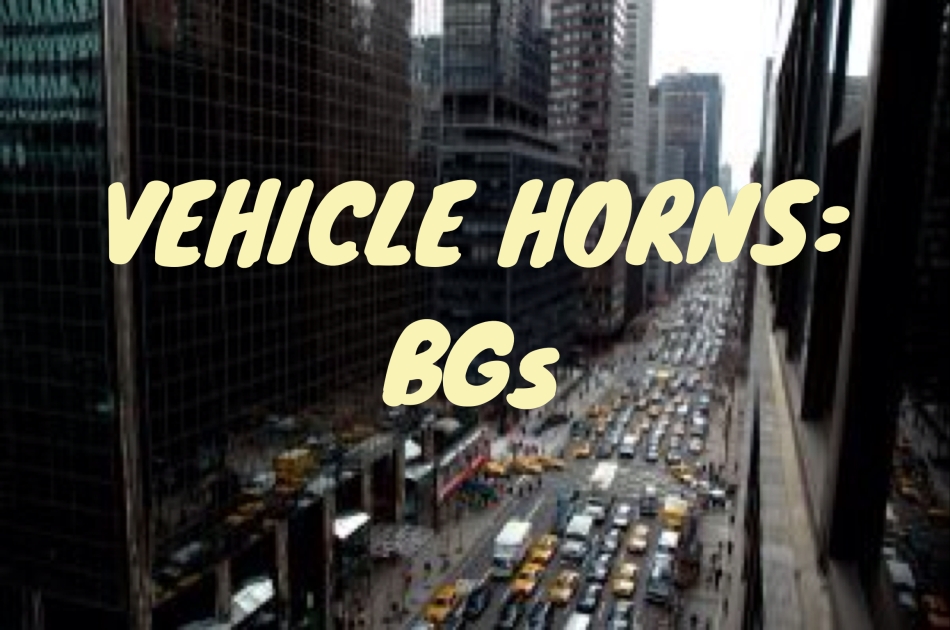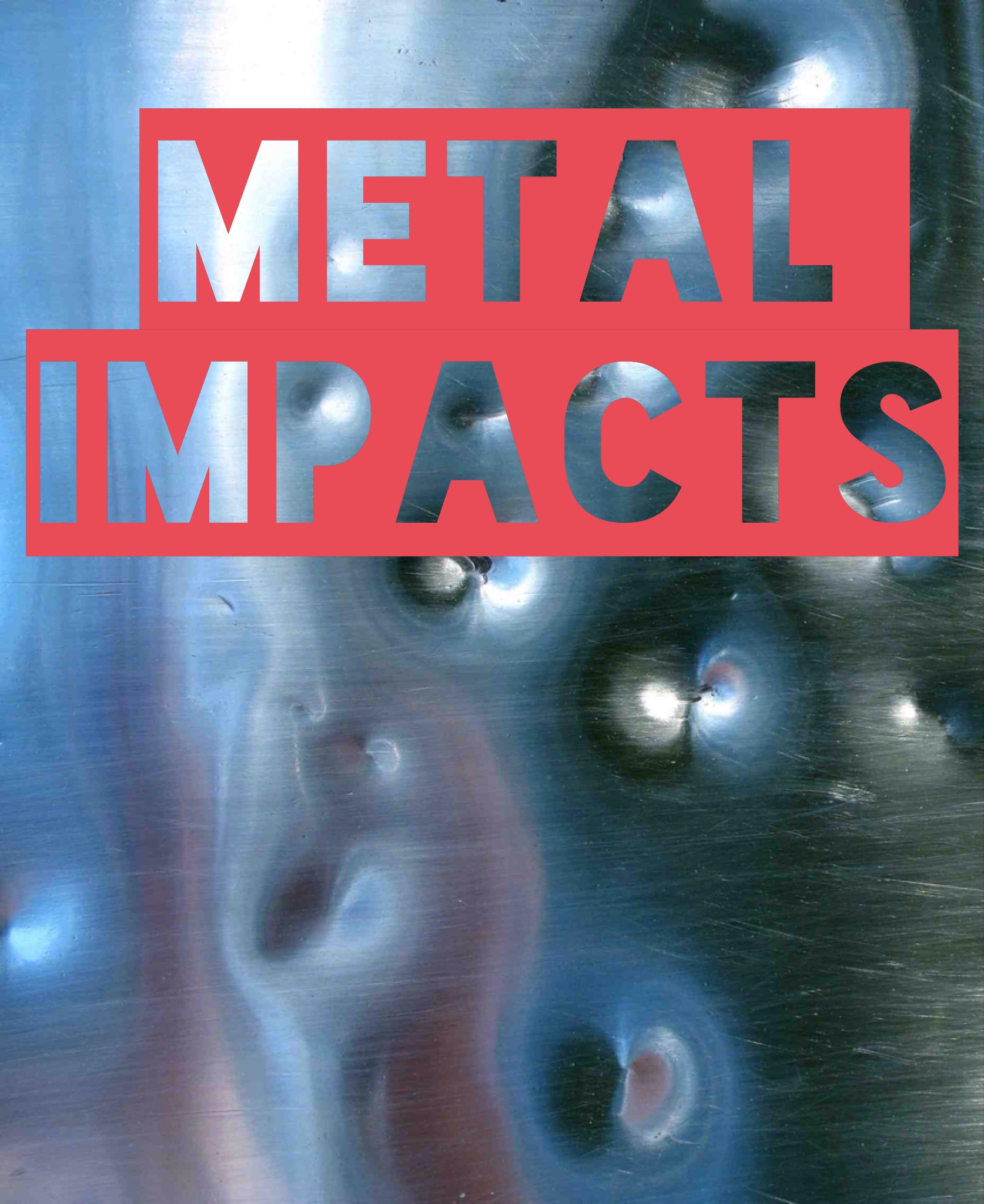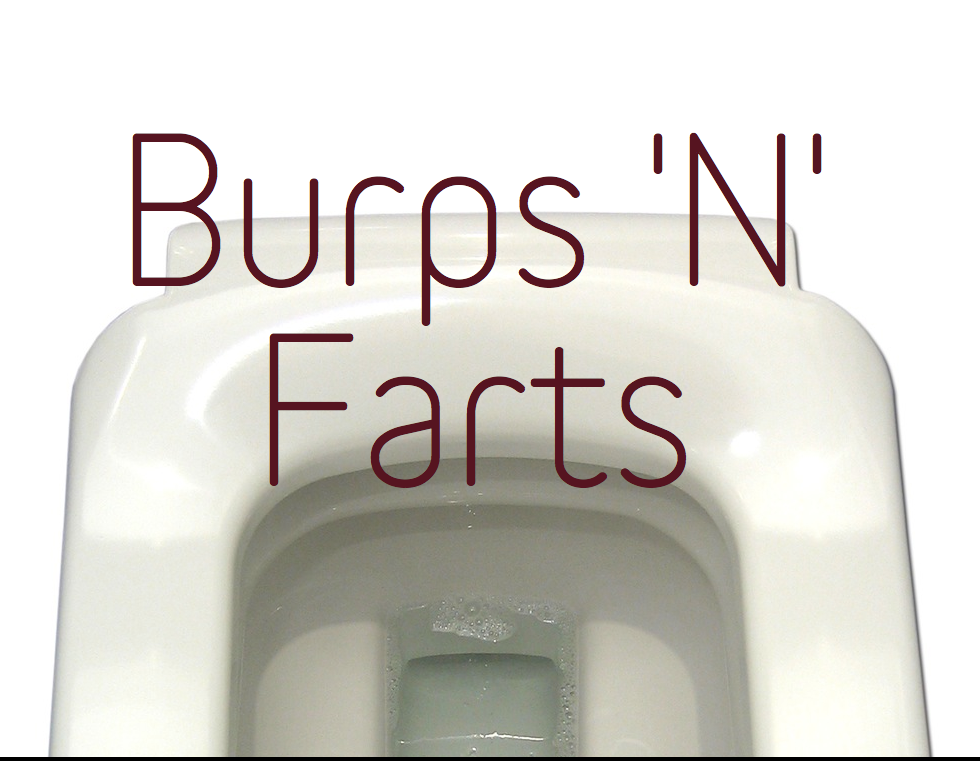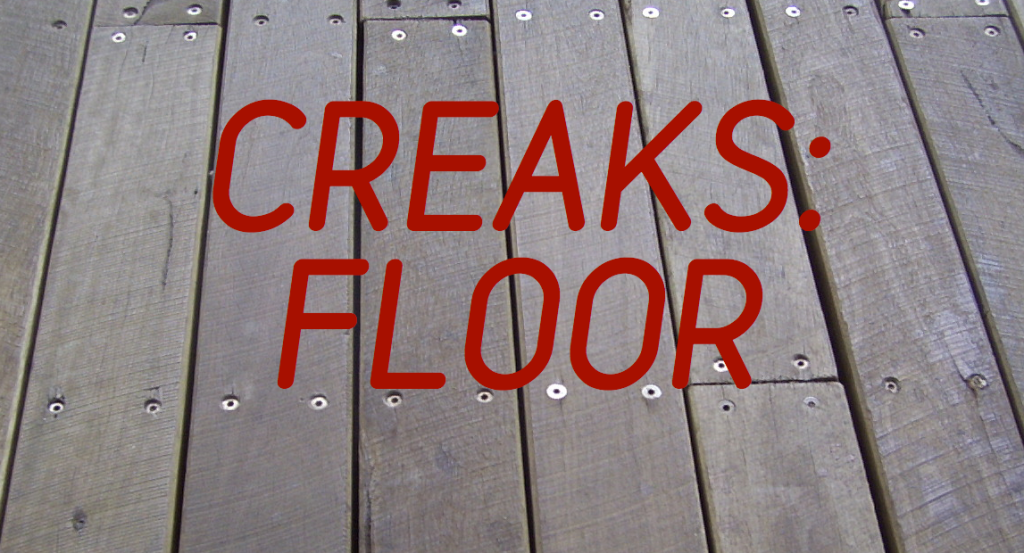New Theme: Bodyfalls
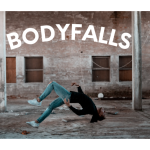

Finally a new theme!
As most of us are probably in lockdown at the moment, I thought it best not to pick a subject that requires straying too far from home but, on the other hand, as it’s been aaaaaages since the last theme, I thought it’d be a bit of an anticlimax to pick some mundane domestic sound to record.
I keep a note of any theme suggestions that get proposed by members and, checking back, I came across ‘Bodyfalls’, suggested by Rene Coronado a few years back on the Club’s Evernote page, which seems perfect: Can be recorded in the garden, park or even indoors but is also quite a challenge – it’s quite a tricky sound to get right I think. It’s a sound that often gets questioned in a mix – i.e. Is it big enough? Does it sound real? Does the surface sound right? etc. Perhaps this is because we’re often torn between achieving the comedy in a fall, or the action movie ‘beef’ of it (as with punches) but also have to make it believable as a realistic event that’s just happened in a real environment.
There’s also another obstacle in achieving a good bodyfall sound – falling over hurts. Unfortunately, falling over gently doesn’t really make much of a sound, so we have to find a way of creating a big impact on a ground surface which sounds like a human body but doesn’t cause one of us to end up in A&E at probably the least convenient moment in our lifetimes.

So you’ll need to come up with your own solutions, but I basically thought of three avenues to explore. Firstly, I’ve been out playing football with my son, 1 v 1, quite a lot recently and because it’s been so wet one of us inevitably slips over now and again. I absolutely stacked it a couple of days ago but because the park’s so muddy it didn’t really hurt at all, so I’ve already had a go at the direct route of trying to do a hard fall myself on a nice soft muddy patch of grass. However, this solution isn’t exactly practical for getting any cool tarmac or interior hard floor bodyfalls though…..
Second opportunity that struck me was that, whatever games my kids play in the garden, 90% of them seem to involve them throwing themselves around to make saves, catch balls, etc. So I might leave a mic out there next time they’re going berserk and see if I get lucky. I have to be careful with this option though, as if I tell them what the recording’s for they’ll start diving around the garden with even greater gusto, which leads back to the previous caveat regarding this not being the greatest moment in time to end up in A&E. Plus my wife’s banned me from involving the kids in any kind of sound fx recording ever since my youngest bruised his eardrum doing underwater screams for me a few years back….but I digress…in any case, this option won’t provide me with big ‘action movie’ bodyfalls, just the lighter, more realistic ones.
The last option I could think of is the foley prop route – maybe I can find some object that, unlike me, is unbreakable (or at least, it doesn’t matter if it breaks) so that I can throw it with force upon different surfaces, possibly from a decent height. Maybe a big densely packed hessian sandbag? A big bag of compost? Can’t be in a plastic bag though otherwise I reckon it’d sound wrong. I could then perhaps supplement that big object impact with one of my lighter but realistic human bodyfalls and together they’d hopefully sound great? I’ll have to work on this one though as I don’t currently have any human-sized hessian bags of sand lying around….
I’ve also experimented with parallel compression on the real bodyfalls I did – to see if I could keep the realism of the untreated fall but supercharge it a bit with the compressed version. I’ll let you know how I got on in another post soon. Thinking it through like this and starting to have a go at the theme has made me think this should perhaps be the first collection where rather than just submitting one natural recording to the collection, we have the option to present our work as ‘kits’ if necessary. As you can see from my ideas above, I may not get the sounds I’m after from just one sound, but from a couple of different recordings plus maybe a little bit of processing. So it may be better to present our recordings a bit like this when necessary:

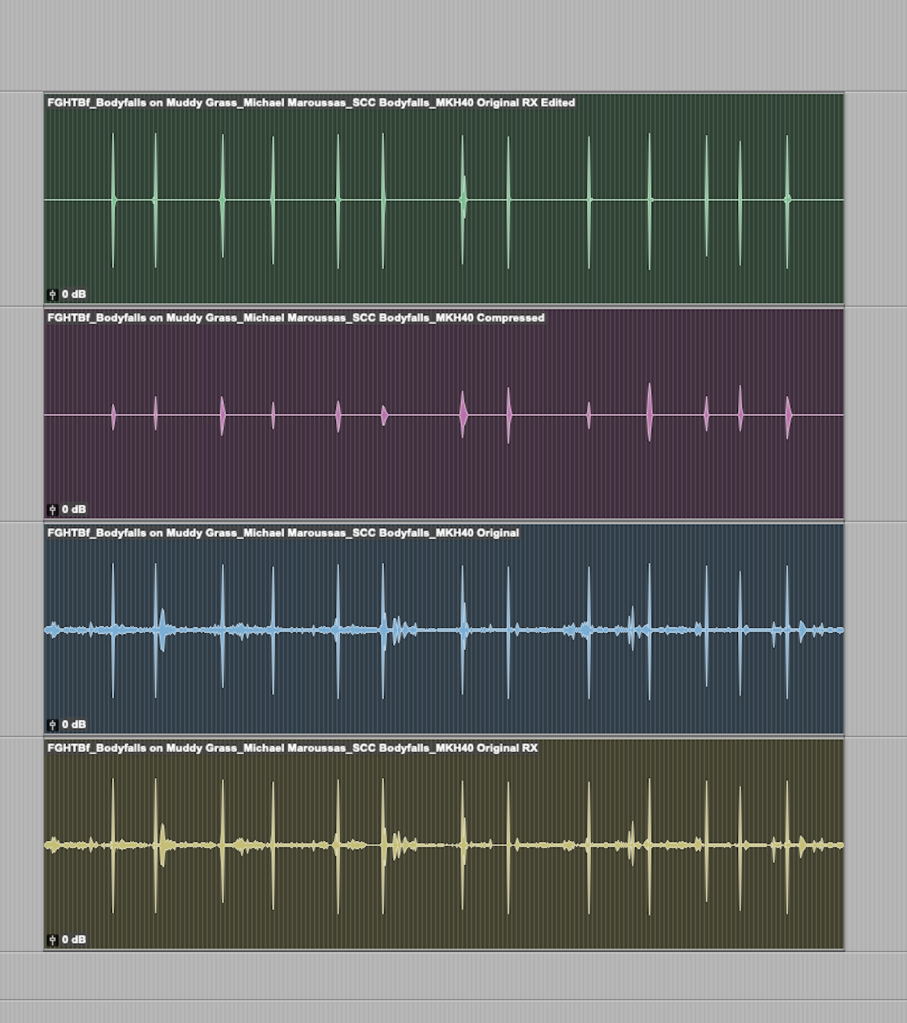
I’ve provided my original recording in a separate folder, just in case, but also an ‘edited’ version in another folder, in which the falls are cut tighter, with the compressed version to played alongside it. Both tracks are exactly the same length so it’s easy to sync them. I may still add another layer when I try my other ideas, if it adds something to the sound. By the way, the only reason I did an RX pass on the original was that it was really windy yesterday so the falls would have been unusable otherwise due to blowing on the mic – I didn’t use it to augment the sound in any way.
It’s important to point out: THIS IS NOT A SOUND DESIGN CHALLENGE! We need to get the best original recordings of real bodyfalls that we can possibly get. If you’re smarter than me (or have tackled this problem before) and can get great bodyfall sounds completely au naturel in one recording then great; don’t over-complicate it with layers of extra sounds or processing. I don’t want us all reaching straight for our arsenals of plugins to get the sounds we’re after rather than trying to achieve them in our actual recording. In fact I might only allow parallel compression to be used, as this means we can keep the sound natural, but beef it up a bit to our own taste by increasing / decreasing the volume of the accompanying compressed track if needed.
What’s more, this is just my own thought process on how to get the best sounding bodyfall – maybe some of you can think of a better way of tackling this challenge that I’ve not mentioned: Go for it, I look forward to hearing the results. Feel free to comment below if you have any questions too, as this theme in particular may need a little working out as we go along – and as we discover what’s possible. Good luck and stay safe!
New Theme for Spring 2015
It’s been a while! A new theme for the new year was long overdue so here goes….the latest theme is chosen by club member Eric Mooney. His description of the theme is:
Walla of a crowd that’s trying to be quiet. An example of this would be at a library, or someplace similar where people are speaking very quietly and maybe even whispering occasionally. There could also be some fairly quiet and subtle movements taking place in the background. This seems like it would be a great backdrop of audio that could be used in pretty wide variety of scenes. This is something that I don’t have very much (if any) of.
More generally, Eric has provided some pointers for recording ‘walla’, which are worth bearing in mind when recording sounds for this collection:
Most of you are probably already familiar with walla, but if you’re not it’s basically just a recording of a “background” conversation that doesn’t contain any intelligible speech. By not being able to make out what the crowd (large or small) is saying the audience stays focused on the lead actor’s dialogue.
File Types to Submit:
Stereo recordings of walla will give the audience a more immersive experience than mono recordings would. For this reason all of the submissions should preferably be recorded and submitted in either stereo or surround so that they can easily be used in any professional project.
I wasn’t initially keen on this theme idea when Eric suggested it because Echo Collective have just recently released their Quiet Spaces library, and I do try to avoid themes that already exist in the form of independent libraries…though that’s getting harder and harder to manage these days as the indie library scene continues to grow! However, having spoken to Rene and checked he’s cool for us to use the same idea, I did think it’d be really interesting to do an international version of the Quiet Spaces library, which I believe is all American locations. Do check out Echo Collective’s Quiet Spaces library and consider grabbing a copy – hopefully the club’s collection will be a useful compliment to it. I hasten to add, though, that despite my comparison with Echo Collective, I believe their library contains recordings of quiet spaces where people are NOT talking; it is mainly just the sound of subtle movement. With our collection, the primary sound is intended to be quiet murmur or even whispers, though that element of shuffle and other ‘presence’ is still a vital ingredient in the quiet crowd sound that we’re after.
Final tip: As I’ve often flagged before with other club themes, bear in mind the acoustics of the space you record in. Old or unusual spaces that are very quiet and free of ambient noise such as background traffic or air conditioning may be the best spaces for adding character to low level signals such as quiet crowd sounds. Oh and very importantly, please state location and country in the name or metadata of any shared files!
Hopefully this explains everything but feel free to drop me a line if anything is unclear.
New Theme for Summer 2014:
The club’s latest theme is chosen by club member, Rick Blything:
“I’m sure that everyone who has visited different countries and cities and pays attention to the city’s soundscape can re-call the feel and emotion from the city’s backdrop.
I believe that vehicle horns help define a city’s soundtrack and that is what this month’s theme is all about:
Vehicle Horns: BGs
Sounds differ enormously from the near constant cacophony of horns heard in Delhi, to the slightly more constrained hoots from a tailback in an English town.
Recordings of these such sounds are great for building up scenes and can be used to good effect as both ‘off-screen’ and ‘establishing’ sounds. They can help to shape a location and sonically guide the audience to that space.
Recording techniques could range from mono directional recordings to wide stereo ambiences. Whilst recording locations could range from roof-tops, interiors, exteriors, mics out the window stlyie or straight up street level tracks.
So next time you visit a city/town take your mics, find any one of a number of locations and pitch up, press the record button and try and capture some evocative tracks.”
Thanks for that, Rick – I can only add that, as with the dog barks theme, please bear in mind that this is a theme that is meant to provide sounds for BACKGROUNDS, not close up spot FX. The horns need to have at least some ‘space’, i.e. echo or reverberation / ambience, around them, otherwise I’ll unfortunately have to reject them. However, if you get a distant AND close sound then feel free to add the close sound too as sometimes these are useful to keep together.
I would suggest it’s worth getting 2-5 minutes of horns; it’s not that useful just getting one or two ‘toots’ unless they are particularly unusual or distinctive.
As always, think about how submerged your distant horn sounds are within the roar of traffic – too much traffic noise and the horns won’t be usable because there’ll be a surge of engine roar every time your car horn is used in a tracklay.
Lastly, as Rick touched upon in his brief, think about the space in which the horns occur – the acoustics of the space that surrounds them is what tends to make vehicle horns evocative rather than the actual horn sound itself.
As ever, I’m looking forward to hearing the results!
New Theme for Spring 2014
Ever since starting the Sound Collectors’ Club, ‘Doors’ has been a frequent request whenever it’s been time to choose a new theme. To date, I’ve always been reticent to go with it, as I feel Tim Prebble already ticked that box a while back with his epic crowdsourced ‘Doors’ collection that he orchestrated. Although overlap with other collections is eventually inevitable, I prefer themes that don’t echo well-known independent libraries that already exist out there.
However, the thing is that a lot of people (including myself) missed out on Tim’s collection when it happened, so there is still a lot of demand from club members for new sounds in this department. I finally caved in when club member Steve Papagiannis’ recently suggested an ‘Open & Close’ theme rather than just specifically doors, so that the theme can include all kinds of different hinged things, big and small, rather than just doors. I’ll let Steve explain:
“How about opens and closes, building a “new” 9000 series. Doors, drawers, gates, garages, cabinets, boxes, compartments, trunks, mason jars, etc – anything and everything, if it opens and closes, from the smallest jewelry box or door latch to the largest electrical utility box or hanger door, it’s fair game (would include knocking/pounding, latches, creaks if there are any, associated with said subject matter being recorded.”
The only requirement I’d insist upon is that you must submit the open AND close sounds of the item / object. After that, any supplementary sounds that are useful bi-products of the opening & closing, such as creaks or the usual interior or exterior versions where relevant, are always very welcome but not essential. Let me clarify that doors ARE welcome in this collection, but so are any other kinds of interesting-sounding hinged items too. Oh, and obviously I’ll keep car doors in their separate collection that already exists.
So let’s do it – let’s make this the new 9000!!!
Addendums:
Rene Coronado has made a good point on Twitter regarding this theme:
“Cool theme! I’d add: What made Tim’s collection so good is the requirement of different performances and perspectives; i.e. soft > hard & near > far.”
& Steve Papagiannis has kindly contributed these thoughts on our subsequent approach towards labelling & metadata for this theme (and all other themes, for that matter):
Definitely worth bearing these thoughts in mind when collecting & labelling your sounds.
Last Theme of 2012-13 Season
“Greetings all, I’ve been working with sound for 30+ years. My experiences range from linear to non-linear; sound design, dialog and music, production thru post. The last 18 years have been focussed on audio for games and I’ve been fortunate to be involved with some amazing projects and people. I recently bought a bunch of field gear and am re-broadening my explorations with recording adventuring. A ‘back to roots’ of sorts.Theme blurb:Tools – an Unexpected Journey.My dad was a carpenter. As a kid, I’d hang out in the shed and would play with vices, hammers, jars of nails, screwdrivers and chunks of wood, etc. Fascination, for all the senses. I don’t know about you but I have always wanted to schmooze my (and my recording gear’s) way into a big hardware store, while it’s closed.
While the club’s theme descriptions tend to be quite specific, I invite you to explore the most unusual sounds that can be found in your tool drawer. For me, it’ll be about the curious use of a given tool, as well as a unique space and recording perspective. “Play” with the object and hone in on the unexpected. Perhaps: use a vice clamp under water in your sink. Or, roll a screw around in a bottle. You could, turn a screw into a turnip with contact mics on it! Why not? Who knows what you’ll end up with!”
New Theme: Child’s Play
AKA ‘Junior Street Voices’!
The easiest path to take for this theme would be to get recordings near schools or play parks. However, as well as it being a tad creepy hanging around these places, I would argue that these will not be the most useful sounds to have in the collection. As with the Street Voices theme, I think the most useful recordings will be of small groups or couples of kids in the street (or any exterior space for that matter) playing or simply shouting to each other.
Obviously, playground chatter is useful if you’re working on a scene in a school. However, isolated kids’ shouts aren’t site-specific. They are very evocative and are therefore a go-to sonic effect to describe a location, e.g. Broadly speaking, yobby shouts suggest feral kids and therefore a rough area. Cutesy voices of kids playing games suggests a more idyllic, ‘safe’ setting. A variety of different recordings such as these are invaluable in any FX library.
I will accept recordings of larger groups of kids too, as it will become a pain differentiating between group sizes otherwise. I’m just emphasizing that recordings of smaller groups of kids are the most useful in my opinion. Interior recordings will be accepted too (mainly because I can’t really imagine ‘Interior Kids’ being a future theme in it’s own right) and kept within a subfolder of the collection.
I’m also presuming that your recordings will be made with at least a little bit of distance between you and the subject, otherwise this enters the realm of crowd ADR. However, this is not a rule and closer recordings will, on the whole, be considered acceptable too. Oh – one last thing – let’s agree an approximate upper age limit of about 10-12 years old? Otherwise, I think it’ll get tricky deciding whether a recording should go in this collection or ‘Street Voices’.
As always, anyone else’s thoughts on what you think this theme should consist of are welcome in the comments below.
First Theme of 2013!
Happy New Year! I thought we’d start 2013 off with a classic – you can never have too many siren recordings! They are so evocative and loaded with meaning.
The theme really lends itself well to the multinational nature of our crowdsourcing group as well because sirens obviously sound different all around the world. Plus, the location in which they are recorded makes such a difference too, e.g. surrounded by skyscrapers as opposed to passing through suburban streets or the countryside. I believe that police sirens are actually the same in New York and London nowadays but I bet you could still often tell them apart in a recording simply from the differing acoustics.
Feel free to record close or distant sirens or passbys – I’m going to create 3 subfolders to cover these different perspectives but if you contribute a recording of just one you do still get access to them all within the main ‘Sirens’ folder.
My only pointers for this theme are: if you submit passbys, try to get the whole approach and fade away. If you submit distant recordings, make sure the sirens aren’t swamped with traffic noise and if you submit close recordings, try and get a decent length of recording to avoid having to do loads of looping. As per usual, if anyone else has any useful advice that they think is worth adding then feel free to comment below.
Let’s get the year off to a good start! Thank you to all club members for your support last year – we’re now 50 strong and rising and the collection is now over 35 gigs in size. Remember that the new 2013 season starts in April and I always give free membership to the top contributors (generally the top 8 to 10) from the past year, so now’s the time to get your tally up!
All the best for 2013! Here’s to another great year of sound collecting and sharing.
Best,
Michael
New Theme – Burps ‘N’ Farts!
But sir! Sir! It wasn’t me, it was Coronado!
What can I say? Don’t blame me, talk to Rene, it was his idea. BUT, all jokes aside, this could be a very useful collection. Many a film depends on a good old-fashioned fart gag, and as far as I’m aware, there’s only one or two ‘body wind’ libraries out there currently.
Feels a bit weird to give you guidelines – bit of an invasion of privacy ‘n’ all – so use your own judgement on this occasion!
One request: This is one occasion when editing is necessary; if you’re providing a recording of several burps or farts, please edit your track down to the important bits, in an easily auditionable series. Other than that, let rip! 🙂
Church Bells Meetup, Anyone?
In line with my intentions to had more meetups organised, I’m happy to say that Raoul Brand got in touch with me recently, with a great idea for the next recording trip. I’ll let him explain:
“Over the last few weeks I have spent a lot of time in Hampstead Heath, North London, where I am currently recording sounds for my dissertation.This involves going up to the same location in the park at different times of the day and at night to record the soundscape with a pair of omni mics rigged in the canopy of a tree.At night especially when it’s quiet but also on Sunday mornings I noticed that I was able to hear the distant bells from St Anne’s church in Highgate, which is about half a mile away.I went up to the church to check out the exact times when the bells are ringing and found out that the church offers a drop in class for their bell ringing practice! – http://www.bird-dog-demo.com/stannes/bell-ringing/I always thought it would be great to be able to record church bells with some degree of creative input and to spend some time thinking about the best mic placement without disturbing the sunday service, so I spoke to the person in charge and he was very welcoming and supportive of the idea.As it would be useful to cover a recording session like this from different microphone perspectives, I thought it would be a perfect opportunity to have another soundcollectors club meet up.It looks pretty certain that we could record the practice session there [in early September]. Apparently access to the tower is a bit tricky and tight so it would definitely be worth setting up before the ringing starts. I think this would suit about 4-5 recordists and I think it would be cool to cover interior as well as exterior perspectives.That’s about it – except that there is a nice pub down the road to grab a pint after.”
Let’s Top Up Floor and Stair Creaks for the Rest of June. Oh, & Potential Creaky Meetup, Anyone?

So, as you’ll have noticed, no new theme this month. I was away on holiday for the start of the month and so, sitting down to prep the new theme launch last night, I thought better of it in the end and decided that the remainder of the month would be better spent having another bash at an older theme that hasn’t as yet had much love: Floor & Stair Creaks.
I’m going to merge these two sets into one folder in Sugarsync so, even if you are only able to provide, say, floor creaks, you’ll still get access to any contributed stair creaks too. This is simply because the two types of creaks are so interlinked that it’s pointless treating them as separate collections.
Have a think if there’s any older buildings you can access to get some good creaks but don’t discount your own homes; creaks from all periods of housing are useful and very welcome.
I’m going to collect some sounds from my house but I’ve also managed to organise an opportunity to get into an 18th Century building in Central London in a couple of weeks time to get some good floor and staircase sounds. In this way, we can kill two birds with one stone and have our first club meet up in quite a long while too. We may not risk getting carbon monoxide poisoning this time as well, which is a bonus.
We’ve only got half an hour in there but it’s only a small building anyway so we should be ok for time. The bad news is that, because it’s a small building, it’s impractical to have loads of us traipsing around in there so I’ll have to limit it to two members coming along with me. However, if I try and schedule the record towards the end of the afternoon then, if you’re in town, we could maybe join you for a drink somewhere nearby after we’re done creaking. Remember, as long as you contribute to the club’s creaks collection then you’ll get a copy of our results anyway.
Best bet is, if you’re likely to be in the vicinity and fancy meeting up in a couple of weeks, drop me a line at thescclub@btinternet.com, I’ll give you more info and we’ll take it from there!
Cheers,
Michael
New Theme – Reactions: Small Crowd
A wide variety of different crowd reactions are always useful. I think it’s great to be able to shape your FX tracklay for a crowd scene so that the sound doesn’t solely depend on the crowd ADR for energy, dynamics and narrative. Sure, you do often need to lay a more generic ‘bed’ for the crowd presence but when you add any necessary ‘ooh’s!’, ‘aah’s!’ and cheers, etc. on top of that the scene can really come to life – and also helps any crowd ADR that you do shoot to sit into the mix more naturally.
Bearing in mind that I may run a theme for large crowd reactions in the future, I’ll describe how I’m going to distinguish between the two sizes of crowd. For now (I can always adapt the collections in the future if necessary), consider this small crowd collection to be for groups of, say, 5 people (e.g. watching sport in a bar) to 200 people (e.g. cheering at a concert in a small church hall). Less than 5 people may be getting a bit to close to the realms of crowd ADR and start requiring the use of release forms, so we’ll steer clear. I may need to eventually cater for a ‘medium’ category but, for now, I’m imagining the other ‘large crowd’ collection to cover small concert halls to stadiums. Despite all my examples being interior, the crowd reactions that you share can be interior or exterior recordings.
I must emphasise that this theme is for crowd REACTIONS! General chat tracks won’t be accepted unless they contain the reactions within, in which case it’s obviously counter-productive to remove the ‘vibe’ that surrounds the important boos, cheers, gasps, etc.
That’s it! I really can’t think of any other conditions that need to be spelled out. Oh, apart from please state your location / language in your track name or metadata. This is always important for recordings shared with the Club but especially so when voices are involved.
Lastly, the more the better. If possible, it’s great to have a few reactions in a recording in case the scene calls for it. Otherwise, you end up searching for other recordings that match in terms of crowd size and acoustics, which is a bit dull.
Happy sound collecting!
2012-13 Season Starts Here!
Here we go with the 2012-13 Season! Before I talk about the latest theme I’d just like to chat a bit about the new membership year.
The Club’s top contributors have already been given free membership for another year. For everyone else, and as a kind of rally call to get as many people on board as possible from the start of the season, I’m offering membership at half price until the end of May. After that, the membership fee will go back to the usual £20 for the rest of the 2012-13 season.
If you’ve contributed to the Club over the past year then you’ll need to renew your membership if you want to continue to have access to those themes. I’ll be making these adjustments over the next week or so, so please act now whether you want to renew your membership (and don’t want the hassle of downloading everything again) or whether you don’t (and want to download everything before you’re excluded).
If you’re new to the Club then now’s the perfect time to get involved. For the next couple of months, a tenner and a few of your own recordings can currently get you access to over 20 gigs of sound fx recordings made by sound professionals from all over the world.
Please bear with me over the next couple of weeks as the new membership year has coincided with me being in the depths of simultaneous temp, pre- and final mixing (don’t ask!) so chances to focus on the Club are few and far between for the next couple of weeks. Once that’s done, I’ll complete the transition from Soundcloud to Sugarsync which has dragged on over the last few months, focus on a bit more Club promotion and also I’d like to use the start of this new season to talk a bit about what the Club’s achieved over the past year and what goals I have for the 2012-13 season. Coming soon.
Right, back to the latest theme: Car Doors.
In any scene, film or tv, a car door open or close is one sound that is nearly always worth checking the production rushes for. Whenever possible, I use these real sounds from the location recordings as they sound more natural than using recordings from another time and place (ditto with any doors that aren’t part of a set). If necessary, I might beef them up or tighten them by means of parallel compression.
However, although this method offers authenticity and naturalism, sometimes it is necessary to add one more layer to infer more meaning in the sound than is inherent in it’s original state. Perhaps the car door needs to sound like more of a solid ‘thunk’ to suggest quality (and therefore wealth) or more of a hollow ‘clang’ and rattle to declare the vehicle as a complete and utter rust bucket.
So, in other words, what I’m after for this collection is car door sounds with character and meaning. Don’t share your bog standard clunks and slams; I’ll get those from the rushes and they’ll fit the picture better. Instead, please share interesting car door sounds that are descriptive of the vehicle and, by association, it’s owner.
Truck, lorry, van, etc doors are all allowed too. As I often mention, please try and get the door from different angles and intensities – namely harder and gentler opens and closes shot from exterior close, exterior wide and interior. Also, getting the boot / trunk sound is useful to complete the set. Please let me know what vehicle the door belongs to and provide a photo if possible.
Here’s to the next 20 gig! Speak again soon,
Michael
A Double Bill of Creaks To End The 2011-12 Season
I thought it might be a good idea to double up this month as it seemed silly to stretch out two such similar themes over two months. This theme brings us the closest we have been so far to the world of foley recording.
Good floor and stair creaks, recorded from head height in order to mirror location recording, can be useful for sweetening foley or production footsteps. However, if you think a particular floor creak has potential for manipulation or as an element in a layered design then it may well be worth recording much closer – you be the judge.
If you do record some floor creaks with the intention of them being sweeteners then please record a decent amount of them. Bear in mind that, with longer scenes in particular, it’s handy to have a generous length of track available from which you can cherry-pick the creaks that suit each particular moment. Try and get a variety of intensities of creak out of your chosen surface; the shorter, subtler creaks are sometimes more useful than the big ol’ horror movie ones. Record yourself or a volunteer making the floor or stairs creak; don’t record an ambient track of the general public passing by because this will also carry extraneous noise (movement, voices, etc.) with it, which we don’t want. Perhaps remove your shoes so that your creaks aren’t spoiled by being tied to actual footfalls.
Be careful with the room acoustic: Decide whether this is useful to have in your recording or not. Remember that it is a lot easier to add reverb than remove it. Having said that, if a room has a nice acoustic, perhaps consider recording two-track mono – one closer boom and one more distant room mic. Don’t contribute stereo files; it’s just a waste of drive space. Include photos and thorough meta descriptions with your recordings whenever possible too.
Although, the images above would suggest otherwise – the surfaces do not have to be wood, they just have to creak in some way. If your floor and stair recording are from the same location and ‘match’ then please reflect this with appropriate naming but make them separate files (because they will go in separate folders – you still need to contribute to both in order to get access to both sets).
Well, that’s about as thorough a set of instructions as I can muster at 12:30 am! If I think of anything else worth mentioning I’ll add it (or tweet it) but I think that’s everything. If anyone else wants to add anything useful to this guide then please feel free to comment below.
‘Night and Day’ Reopens – Right On Your Desktop!
The Night and Day collection is back in action, which means that all Club themes are now back online for members to start contributing to again – but this time with a bit of a difference.
As 2011 has passed by and the collection has grown, I’ve already begun to think that The Sound Collectors’ Club needs to find a more suitable location to store it’s collections in than Soundcloud. Soundcloud is great aesthetically and perfect for linking to other social networks and blogs, and I’ll definitely continue to use it for the mp3 samples that can be auditioned in the Browse The Collection page. However, as a means of cloud storage for an ever-growing sound fx library, it isn’t ideal – the more themes we amass, the larger the amount of ‘secret links’ we’ll have to keep hold of and keep handy for whenever we want to access the collections. Downloading and then re-loading file metadata is also cumbersome via Soundcloud. What I feel we need is a form of cloud storage which more closely mirrors the way we store our own sound fx libraries on our work computers.
In my opinion, the application that currently fulfills this brief the best is Sugarsync. There are many other similar applications but they all seem to fall down on one or more particular function that is essential for the Club to work well by this method. For example, Dropbox is great, but it requires everyone sharing a folder to have the capacity for the full size of the shared folder in their personal account, which is impractical. You can get around this by signing up for one of their Team accounts but that costs about £700 which is obviously far too expensive.
With Sugarsync, only I need to buy the amount of storage needed to hold the Club’s collections. I can then share it with all contributors, who only need sign up for the free account. You will receive an e-mail from me saying that I’ve shared a folder with you; if you’ve already signed up to Sugarsync you can access it straight away. If not, you can click on the ‘Sign Up’ link on the e-mail and then let their website lead you through the registering process before returning to the e-mail to access the shared folder.
As soon as you access the shared folder, it will be synced to your desktop – if you’re on a Mac, it will sync to a new folder in your ‘Documents’ folder. It isn’t ideal but this folder has to stay in this location in which it is created AND MUST NOT BE EDITED OR ADDED TO!!! This is because in order for you to be able to sync the folder to your desktop I have to enable you to access AND modify it. I’m pretty sure better permission controls will come along before long so that I’ll be able to let you access but not modify folders but, for now, please don’t change, move, delete or add to this folder, as it will change the folder for everyone else as well and will get very confusing. For this reason, please install Sugarsync on your personal computer rather than any shared work one that you might use, in order to minimize this risk (you can still access Club sounds via the internet on shared computers). However, having said that, I do have backups should any accidents happen and Sugarsync has quite a good ‘undo delete’ system, so it’s not quite as precarious as it sounds.
As is often the way, there are workarounds to these slight flaws: If it’s a bit of a pain having to go into your ‘Documents’ folder to access the sounds then you can, of course, create an alias of the folder in a more easily accessible location. However, for now, it’s probably a good thing that the sync folder is tucked out of the way because you’re then perhaps less likely to accidentally edit it. In my opinion, it’s maybe best to create a new ‘The Sound Collectors’ Club’ folder in your sound fx library then create new folders within that for all the sets that you have access to. Once you’ve done that you can just use the sync folder in ‘Documents’ to copy new audio to your sound fx library from whenever I tweet that new sounds have been added to the collection. Please let me know of any other non-destructive workflows you devise to incorporate the Club’s collection into your sound fx library.
So that’s the downloading taken care of! As for the uploading, we’ll stick with the existing system via Soundcloud for now – I don’t want to throw too many new systems at you all at once so I’ll probably hold fire with any new uploading instructions until the New Year. I’ll gradually start adding step-by-step instructions or even a tutorial vid to the website to explain the new process (as well as gradually sharing all the other collections) but hopefully, for now, this post will suffice in pointing you in the right direction towards setting up your Sugarsync account then syncing collections to your desktop. Obviously give me a shout if you have any problems.
However this system ends up being adapted to suit our needs, I really feel this type of cloud sharing is the future for the Club so do please give it a go. I think the ideal scenario would be for all Club members to have a dedicated folder (which they can’t erase) somewhere useful on their computer (such as in their fx library or in their menu bar like Dropbox) which auto-syncs whenever new sounds are added to the collection so that you only need to drag and drop them into Soundminer / Audiofinder / etc. from time to time. Sugarsync may just be the first but vital stepping stone towards that goal – please let me know how you get on with it.
‘Trains: BGs’ Theme Deadline Extended to End of October
Well, I did say I wasn’t going to extend deadlines anymore but this is a bit different.
Ever since collections started staying online and remaining active, new themes have been accumulating tracks more slowly. With hindsight, this outcome is perhaps obvious – members’ new contributions are getting spread amongst an ever increasing number of themes. Also, new themes inevitably inspire less urgency to participate before the end of the month when people know that they can join in and grab the collections at a later date when they specifically need them or when they simply have more spare time.
That’s all fine but I think a change is in order to address this ‘imbalance’. If old themes are still attracting significant interest then perhaps a more steady influx of new themes is necessary. I’m proposing making themes bimonthly for the time being.
I must admit that, when I’m busy, I do find that the month’s fly by and before I know it (and before I’ve barely had a chance to add a recording) it’s time to come up with a new theme again. With an extra month for each current theme, I’m hoping it’ll give me more of a chance to explore each subject; posting about my own and other members’ recordings, as well as hopefully making club meetups a more regular occurence (one for every new theme) as well.
Generally, I’m quite a strong believer in the idea of not trying to please everyone otherwise you end up pleasing nobody. However, on this occasion in particular, I’d be really interested to hear members’ thoughts on this matter so please feel free to leave any comments below.
‘Rain’ Theme Reopens!
The Club’s very first theme (from back in November) is now back online for members to start contributing to again.
I’ve re-uploaded any tracks from the old collection that qualify under the current requirements – in other words all those that have some form of vocal ident on. The contributors of these qualifying tracks have been e-mailed new secret links to the reactivated set and so can gain access immediately.
Unfortunately, if you originally contributed a track but it hasn’t been re-uploaded then you will need to contribute a new track which meets the current requirements in order to regain access to the set. If your old track does qualify but you aren’t currently a member of the Club then I’ve got your track on standby ready to add to the set should you join the Club in future.
For those who don’t remember the original brief regarding what sort of rain recordings we’re after, here’s what I originally wrote:
Rather than just ‘rain’, I should perhaps say rain on surfaces, i.e. rain on windows, roofs, pavements, etc. – whatever sounds interesting. Rain on surfaces such as corrugated iron or greenhouses can sound great but in some ways I think it’s a bigger achievement to simply get a great recording of the sound of rain on a window which doesn’t just sound like white noise.
Next up is the old Night and Day set which I’ll try and get re-uploaded as soon as possible too. Watch this space….


